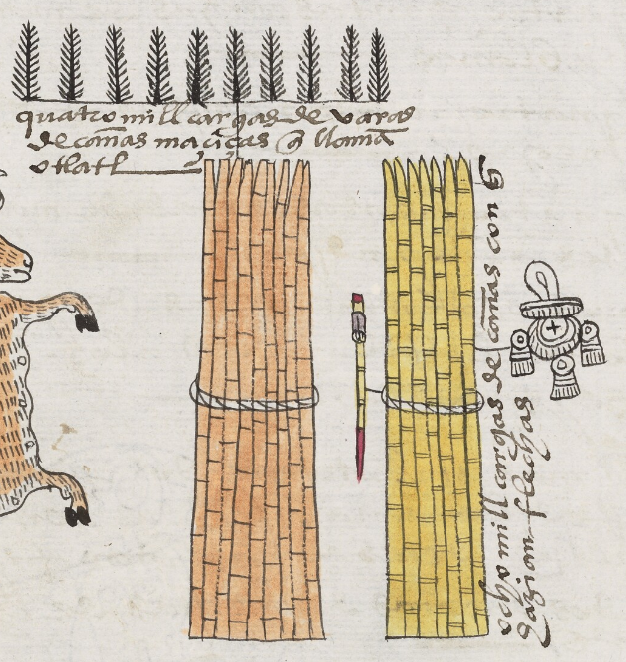acatl (Mdz42r)
This is an example of iconography from the Codex Mendoza, meant to provide a comparison for hieroglyphs that represent the reed or cane (acatl). This is a vertical, tied group of cane stalks that look much like bamboo, as they are segmented and yellow. The acatl has practical purposes, but it was also a calendrical symbol, both as a day sign and a year sign.
Stephanie Wood
cañas
c. 1541, but by 1553 at the latest
reeds, tules, carrizos, plants, arrows, darts, xiuhpohualli, año, turquesa, xihuitl
la caña
Stephanie Wood
Codex Mendoza, folio 42 recto, https://digital.bodleian.ox.ac.uk/objects/2fea788e-2aa2-4f08-b6d9-648c00..., image 94 of 188.
Original manuscript is held by the Bodleian Libraries, University of Oxford, MS. Arch. Selden. A. 1; used here with the UK Creative Commons, “Attribution-NonCommercial-ShareAlike 3.0 License” (CC-BY-NC-SA 3.0)


